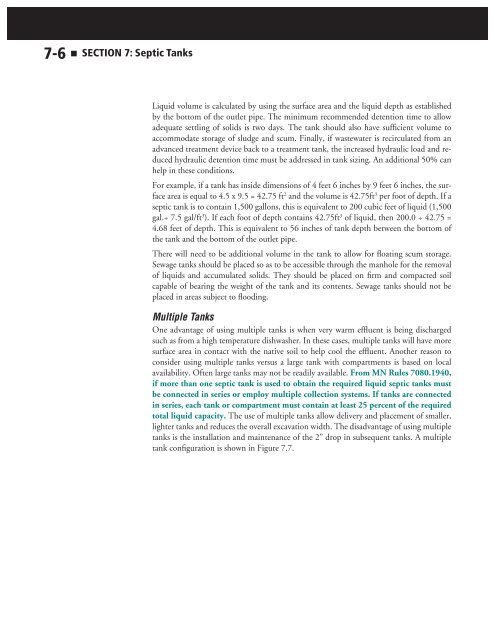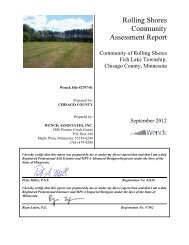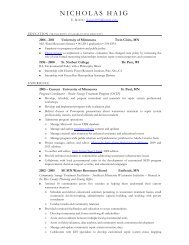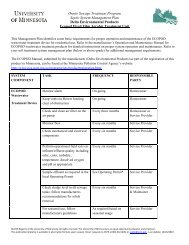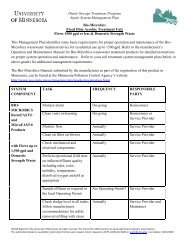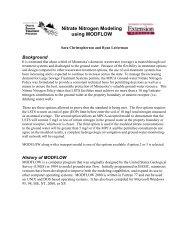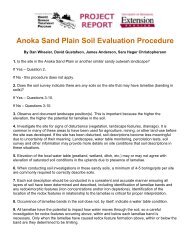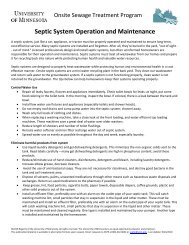SECTION 7: Septic Tanks - Onsite Sewage Treatment Program ...
SECTION 7: Septic Tanks - Onsite Sewage Treatment Program ...
SECTION 7: Septic Tanks - Onsite Sewage Treatment Program ...
You also want an ePaper? Increase the reach of your titles
YUMPU automatically turns print PDFs into web optimized ePapers that Google loves.
7-6 <strong>SECTION</strong> 7: <strong>Septic</strong> <strong>Tanks</strong>Liquid volume is calculated by using the surface area and the liquid depth as establishedby the bottom of the outlet pipe. The minimum recommended detention time to allowadequate settling of solids is two days. The tank should also have sufficient volume toaccommodate storage of sludge and scum. Finally, if wastewater is recirculated from anadvanced treatment device back to a treatment tank, the increased hydraulic load and reducedhydraulic detention time must be addressed in tank sizing. An additional 50% canhelp in these conditions.For example, if a tank has inside dimensions of 4 feet 6 inches by 9 feet 6 inches, the surfacearea is equal to 4.5 x 9.5 = 42.75 ft 2 and the volume is 42.75ft 3 per foot of depth. If aseptic tank is to contain 1,500 gallons, this is equivalent to 200 cubic feet of liquid (1,500gal.÷ 7.5 gal/ft 3 ). If each foot of depth contains 42.75ft 3 of liquid, then 200.0 ÷ 42.75 =4.68 feet of depth. This is equivalent to 56 inches of tank depth between the bottom ofthe tank and the bottom of the outlet pipe.There will need to be additional volume in the tank to allow for floating scum storage.<strong>Sewage</strong> tanks should be placed so as to be accessible through the manhole for the removalof liquids and accumulated solids. They should be placed on firm and compacted soilcapable of bearing the weight of the tank and its contents. <strong>Sewage</strong> tanks should not beplaced in areas subject to flooding.Multiple <strong>Tanks</strong>One advantage of using multiple tanks is when very warm effluent is being dischargedsuch as from a high temperature dishwasher. In these cases, multiple tanks will have moresurface area in contact with the native soil to help cool the effluent. Another reason toconsider using multiple tanks versus a large tank with compartments is based on localavailability. Often large tanks may not be readily available. From MN Rules 7080.1940,if more than one septic tank is used to obtain the required liquid septic tanks mustbe connected in series or employ multiple collection systems. If tanks are connectedin series, each tank or compartment must contain at least 25 percent of the requiredtotal liquid capacity. The use of multiple tanks allow delivery and placement of smaller,lighter tanks and reduces the overall excavation width. The disadvantage of using multipletanks is the installation and maintenance of the 2” drop in subsequent tanks. A multipletank configuration is shown in Figure 7.7.


